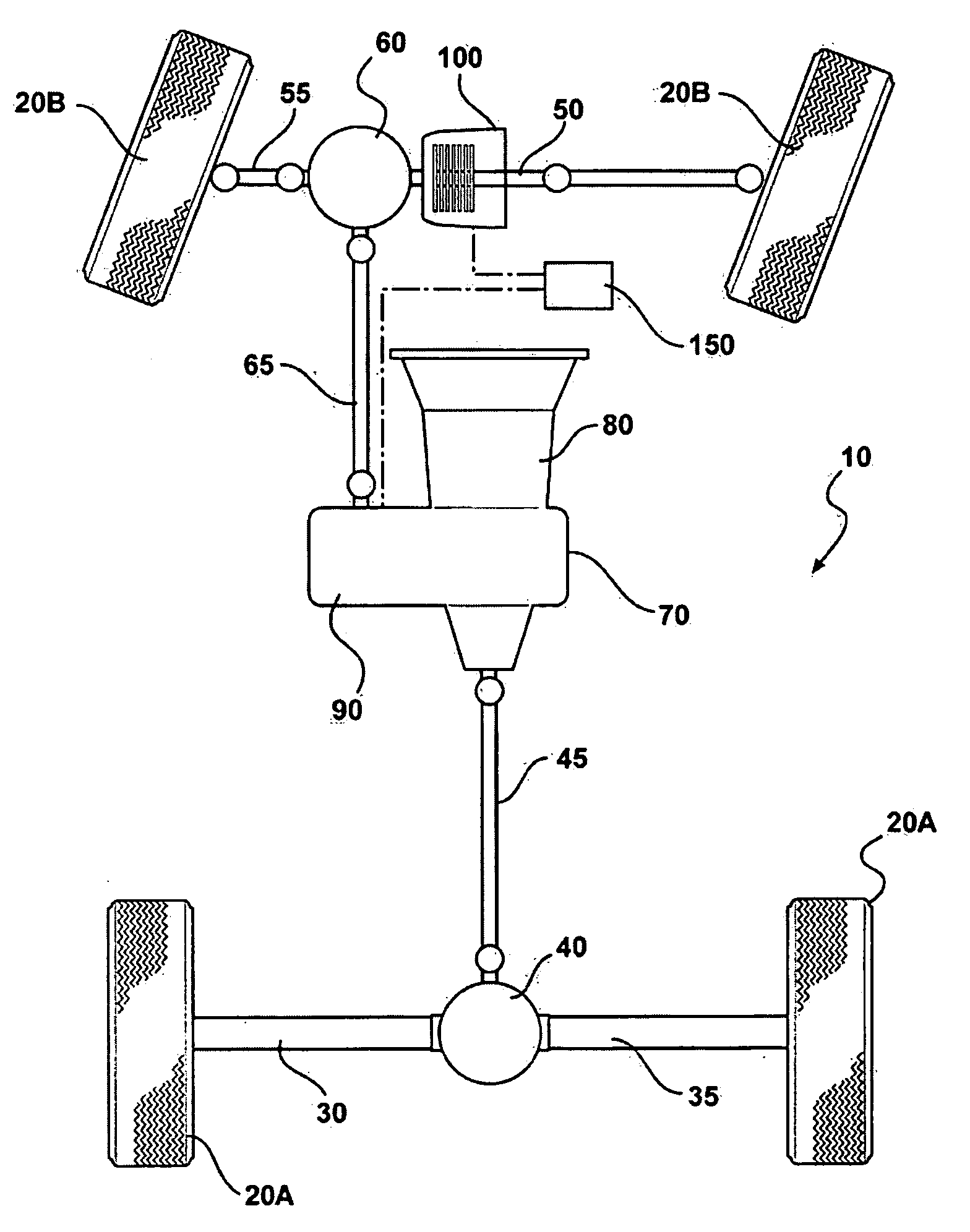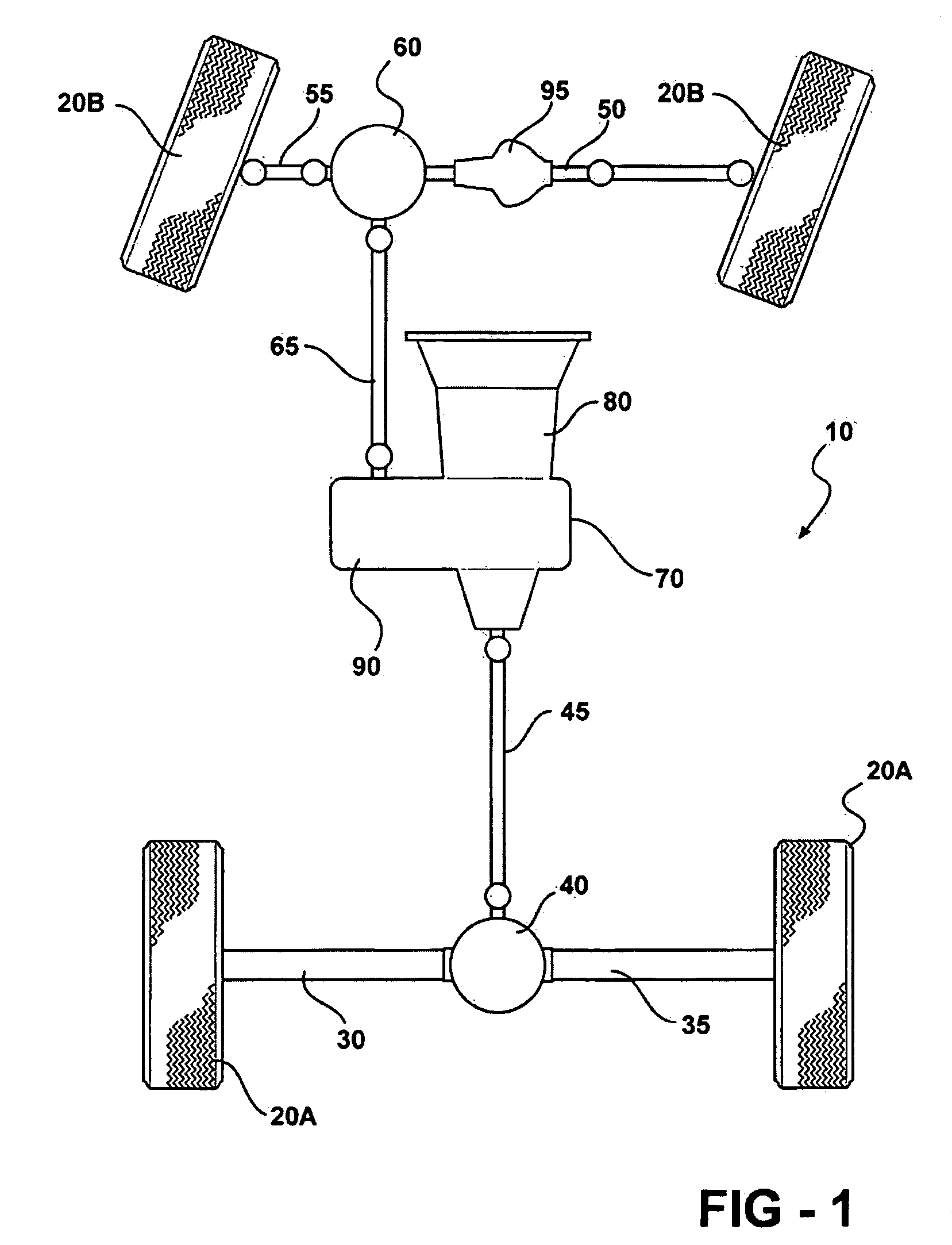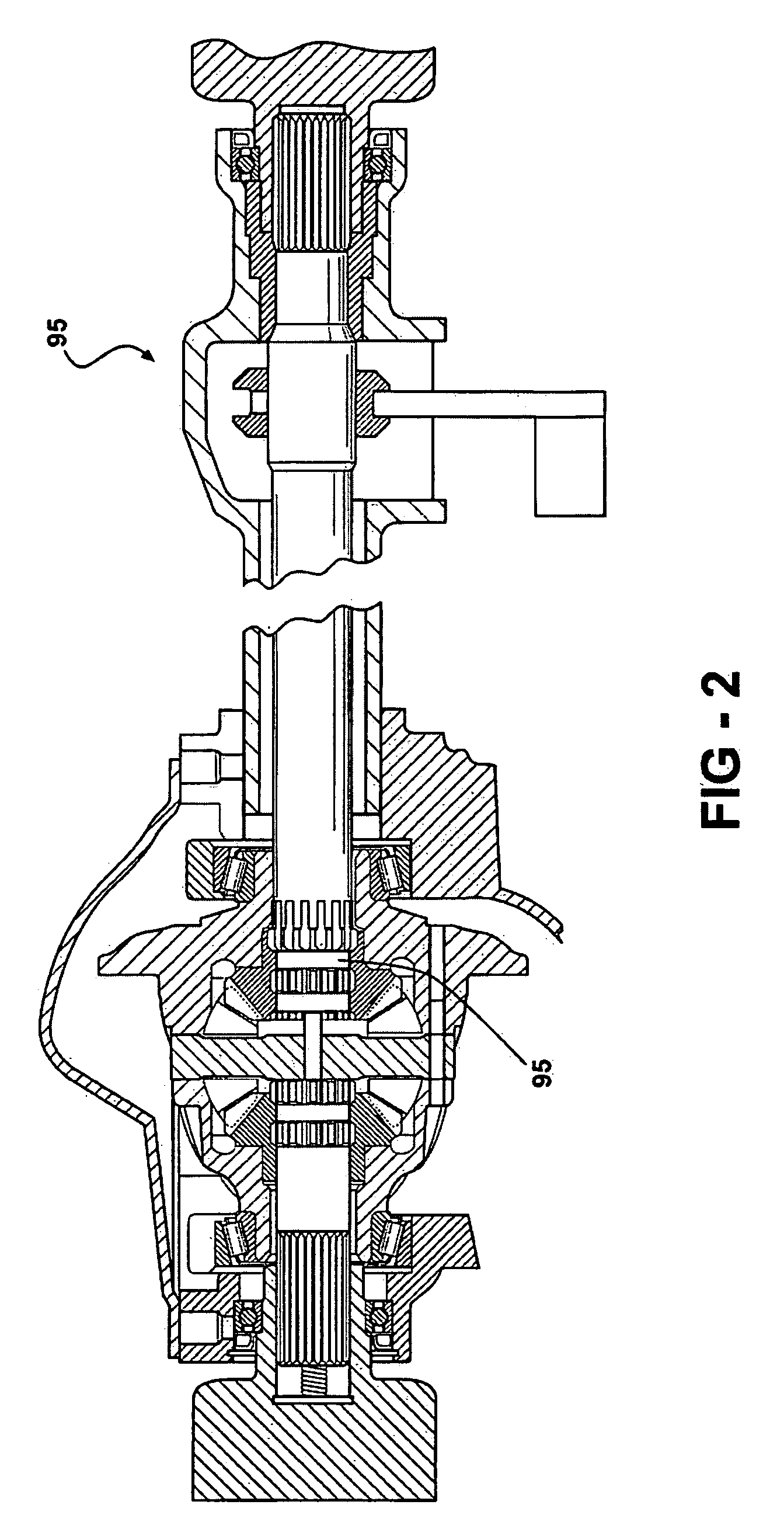Secondary drive axle disconnect for a motor vehicle
- Summary
- Abstract
- Description
- Claims
- Application Information
AI Technical Summary
Benefits of technology
Problems solved by technology
Method used
Image
Examples
Embodiment Construction
[0015]In general the present invention is directed to a drivetrain in a motor vehicle of the type having either four-wheel or all-wheel drive capability, and, more particularly, to a system for actively engaging the secondary drive axle in such a vehicle drivetrain without the need for synchronizing the disconnect. The term “disconnect”, as employed in the designation of the subject system, is used herein to describe both an engagement and a disengagement function performed in the vehicle drivetrain. The term “active” as employed herein denotes system function which is capable of being performed automatically, without operator control.
[0016]Referring now to the drawings in which like elements of the invention are identified with identical reference numerals throughout, FIG. 1 is a schematic diagram of a four-wheel or all-wheel drive drivetrain 10 of a motor vehicle having a primary driveline and a secondary driveline according to prior art. The primary driveline comprises a pair of ...
PUM
 Login to View More
Login to View More Abstract
Description
Claims
Application Information
 Login to View More
Login to View More - R&D
- Intellectual Property
- Life Sciences
- Materials
- Tech Scout
- Unparalleled Data Quality
- Higher Quality Content
- 60% Fewer Hallucinations
Browse by: Latest US Patents, China's latest patents, Technical Efficacy Thesaurus, Application Domain, Technology Topic, Popular Technical Reports.
© 2025 PatSnap. All rights reserved.Legal|Privacy policy|Modern Slavery Act Transparency Statement|Sitemap|About US| Contact US: help@patsnap.com



